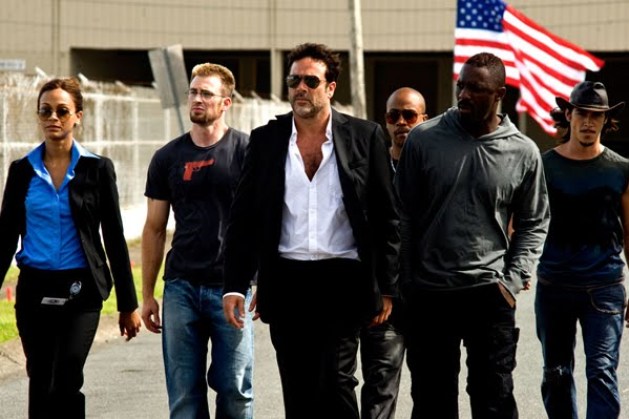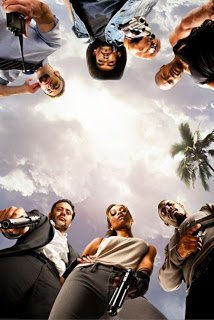It was a big weekend for comic conventions this weekend, with the inaugural C2E2 landing at last in Chicago. While most of the comic book publishing industry was there, I was heading south from L.A. to the Wizard World Anaheim Comic Con, which was more full of pop culture celebrities than comic book folks
Let me talk about Chicago first. This was the first show in Chicago put on by Reed Exhibitions, a sister company to Reed Business publisher Variety that has extensive experience putting on trade shows all over the world. It’s best known to comics types for putting on Book Expo America and New York Comic-Con, which has shifted from chilly February to fall for this year’s fifth annual gathering.
By all accounts, this was a show very much like New York — focused on the publishing side of comics. Pretty much all the top writers, artists, editors, publishers and retailers in the comic book business were at Chicago, and it sounds like anyone who loves and reads today’s comics would have had a total blast. As you would expect from a company like Reed, the show appears to have been very professionally run and I particularly like that photos of the main hall showed large windows that let in some natural light to the place, which is always nice at these shows. The usual comic book news sites — Newsarama, CBR, Bleeding Cool, The Beat, Comics Reporter, etc. — were all there and extensively covered the industry announcements. Few of those announcements struck me as particularly fantastic — there’s always creative churns on long-running titles, a few new titles to announce, etc. But it does sound a like a terrific show that I hope to catch one year soon, especially since I’ve never had the luck to visit Chicago and would like to do so.
Since I wasn’t going to Chicago, I was already planning to spend a day at the new Anaheim Comic Con, when Newsarama’s Mike Doran emailed with some panels they needed covering. If you haven’t seen them already, head over to Newsarama and you can see what I live blogged from a joint Stan Lee and Avi Arad panel, as well as the 1960s Batman TV show cast Q & A and writeups on the Empire Strikes Back 30th anniversary panel, the William Shatner panel and a panel with Superman movie producer Ilya Salkind.
I was unsure what to expect from the new Anaheim convention. I had been to a number of previous Wizard World shows — two in Long Beach, two in Los Angeles and one in Texas about five years ago — and found them varying widely in quality. The first show in Long Beach was quite good, but each subsequent year seemed to slide a bit as the programming never developed beyond publisher promotions and the number and quality of exhibitors appeared to be either static or declining.
But this is a new version of the Wizard World shows. It is less focused on the comic book publishing industry and more about celebrity appearances, collectibles and cosplay. If you must have your comic book industry presence, this model is not going to be satisfying for you. But for the vast majority of people who attend shows like Comic-Con International: San Diego or New York who are less interested in comics and more interested in an overall pop culture experience, this kind of show is going to scratch that itch perfectly.
Part of the plan with the new Wizard World shows is to make it into a tour. Wizard founder and president Gareb Shamus has been steadily adding shows and is fashioning his schedule into a touring show that can hit a different city every couple of weeks and deliver the comic con experience to places it’s never been able to hit before.
The tour idea works for a couple of reasons. One, the show in Anaheim depended less on comic book companies and creators, who realistically can’t devote the kind of time out of the office and away from work required to hit a full tour of such shows. But the retailers can.
And so can a number of the celebrities involved, especially if their work schedule is less than full. And there was a really diverse range of celebrities, though it likely won’t be fully replicated in places farther away from Los Angeles. Among the folks who had booths and were happily signing autographs and posing for pictures were Shannen Doherty, Mickey Dolenz of The Monkees, Lindsay Wagner and Richard Anderson from the old Bionic Woman, Mickey Rooney, Jewel Staite, Brady Bunch star Christopher Knight, Jason Mewes, Ted Raimi, Loretta Swit from M*A*S*H and tons more. That’s in addition to the top-line draws like Adam West and Burt Ward from Batman, Shatner and fellow Star Trek stars Levar Burton and Michael Dorn, and on and on. They were all making money — Shatner was charging $75 an autograph; West, $50; and most of the rest anywhere from $10 to $20 a shot. And only a handful of them would be sitting idly as I walked the floor.
The rest of the floor was devoted to the usual assortment of vendors selling new and old comic books, graphic novels, toys, T-shirts, etc. The selection and variety of vendors was quite good, though I would have like to see some original art vendors there. I managed to pick up a few items: Heavily discounted copies of Iron Man: Demon in a Bottle (which I have never read!), Green Lantern: Emerald Dawn and four pint glasses for beer decorated with classic Marvel character designs (two Avengers, two X-Men). (I later realized that both those books feature the main character dealing with a drinking problem, making all my purchases at the show booze-related).
The artist alley at the rear of the hall featured a number of small press and indie efforts in addition to a few pros, such as J.M. DeMatteis and Glenn Fabry. It wasn’t the biggest or best artist alley ever, but there was activity there throughout the day.
As for the crowd, the best way I can describe it is comfortable. Neither jam-packed nor deserted looking, it felt full without being jam packed or uncomfortable. Wizard’s methodology for calculating attendance is suspect, so I don’t know that comparing numbers with Chicago will be terribly useful. (For the record, C2E2 pegged attendance at 27,500, which reportedly is a bit less than expected).
Perhaps the biggest difference between this show and the previous Wizard shows is that this one was run much more professionally. I arrived around 10 a.m. and while there was a line queued up outside, it wasn’t too onerous. Check in was easy. The floor was well laid out, there was some good variety in food choices (even liquor if you wanted it). Of course, it’s never 100 percent perfect, and the hike to the panel rooms (around a specialty coffee convention going on at the same time) was a bit of a pain and likely contributed to all the panels I saw (except Shatner) filling only a half to three-quarters of the room.
The take-away from all this is that the new Wizard World Comic Con shows are eminently viable and fill a potentially huge niche. This is a show that brings the flavor of the full, crazy San Diego experience to a lot of cities and is perfectly suited for people and families for whom
as a kind of touring version of the comic con experience perfectly suited for folks who have heard about and are interested in the big San Diego show but not up for traveling to it or dealing with the kinds of crowds it draws. It’s essentially comic con lite, focusing on the elements that land shows like San Diego on the news every summer: costumes, collectibles, celebrities and movie previews.
Of course, anyone who’s been to San Diego or the big New York show and dug the intensity of those events is going to find this a different and potentially disappointing experience. But the Anaheim show didn’t present itself as that kind of show and I don’t think you can fault it for delivering a different, less stressful show.
I’ll be interested to see how well Wizard can replicate the pleasant experience of Anaheim in other cities. It seems completely possible that the relationships built up with such celebrities as Shatner, West, et al., will bring in decent crowds in any city given the right promotion. And while Wizard shows are competing dates-wise with some larger shows, it looks like Wizard can survive just fine without the hard-core comic book industry should its shows end up clashing with anything from Wonder Con to Heroes Con to New York Comic Con.
Lastly, attending the show Anaheim convinced me that as a potential site for Comic Con International, it would be a step backward from San Diego. I understand that the convention center has a more floor space, but the intangibles of the area surround the convention center — into which thousands of con-goers would venture each night of the show — is dull compared to downtown San Diego. It is family friendly — lots of reasonable-looking motels and chain hotels, plenty of chain and non-chain family restaurants such as Coco’s, Denny’s and Cheesecake Factory — but little hip and interesting enough to support the party scene — both hosted events and general gathering spots — that is important to a lot of people who attend the show. Just touring around a bit after the show reinforced what I remembered from previous visits to the area: it lacks the charm and sophistication that San Diego brought to its downtown. It’s hard to imagine the annual super-hip and exclusive SyFy/EW/Marvel party working in any of these hotels, and comics pros and fans who like to head out for a good steak dinner or a few pints of local brewed beer will similarly have far fewer options. All of which negates any benefit from the slightly larger convention center that will still be strained to its limits by Comic-Con size crowds. Better to either stay in San Diego or head up to the burgeoning downtown core in Los Angeles, which if current plans continue apace will be an even hotter spot by 2013.
Like this:
Like Loading...










